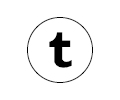Q&A with Dr. András Szántó

Dr. András Szántó, PhD, advises leading museums, foundations, and corporations on cultural strategies and program development worldwide. His writings have appeared in The Art Newspaper, The New York Times, Artforum, and many other publications. He has lectured on art business at the Sotheby’s Institute of Art, and is a frequent moderator at the Art Basel Conversations series.
Q: What are the key trends you have witnessed in the Chinese art market in the past year from a global perspective in terms of price levels, buying patterns, and shifts in taste?
A: The Chinese art market keeps maturing, from the buyers and the quality of the work to the sophistication of the intermediaries and the presenting institutions. There’s even a growing appetite for philanthropy. Part of this maturity is reflected in a greater appreciation of Chinese Art and cultural traditions. In some sectors of the art world in China, it can be seen in increasing professionalism.
Despite a slowdown in the economy, wealth generation and accumulation have not stopped. However, conspicuous consumption is now seen in a somewhat different light. In the background, less visible in the press, is a vast and dispersed middle to upper-middle market segment, which will feed demand in art and collectibles at lower price points. The defining “trend” nonetheless probably remains the lack of one: the Chinese art market remains in a state of evolution and transformation. And, as much as it depends on domestic economic dynamics, the Chinese art market is buoyed by strength in the global art market system, and remains vulnerable if the market enters a downward cycle.
Q: What do you think are the major challenges and opportunities facing the Chinese art market? How do you foresee addressing these challenges?
A: The arts system needs to continue to professionalize—it’s still in its relative infancy. Transparency and sound business practices are key to growth. A big question has to do with the mechanisms of validation in the domestic market. What, other than prices, lies behind valuations? Who are the trusted authorities? Better-informed buyers and responsible intermediaries are the best guarantees of long-term improvement. In terms of future opportunities, it will be interesting to see how China develops its own commercial ecosystem around art. The shape and dynamic of the art market has transformed each time it has shifted to a new part of the world. The Chinese art market is not tied to legacy structures and norms. As such, it may be open to more change, and may leave a deep imprint, for better or worse, on the global art system. This is a fascinating developing story.
Q: Have there been any new developments in government policy or industry regulation in recent years that may have had an influence on the Chinese art market? Or any you would like to see that you think would better facilitate business or make sales easier?
A: The anti-corruption policies are creating headwinds for collecting, since some sources of buying were tied to buying influence and forms of public wealth display that are not currently officially sanctioned. However, cleaning up the market can do some good.
The policy or market innovations that would make for a better business environment are much the same in China as elsewhere: transparency, good and reliable data, ethical buyers and sellers, professional lending, underwriting practices, trustworthy experts, and informed reporting. Another policy issue concerns the government’s appetite for allowing foreign businesses.
Q: Auction houses are expanding their private sales worldwide. From your perspective, how will the growth of private sales in auction houses influence the development of the art market in China?
A: In general, the more pathways that are open for people to buy art, the greater will be the interest in buying. However, in an atmosphere where luxury consumption is frowned upon, private sales may benefit.
A larger question has to do with the role of auction houses in the emerging art ecology. Will auctions, on balance, be stronger in China relative to the West? Can they be even more effective in circumventing galleries? And which auction houses will these be—the big Western houses or home-grown ones? It’s too early to tell which players will prevail, alone or in partnership.
With respect to private treaty sales, as with broader trends in the market, their prospects are closely tied to the overall fortunes of the market—both in terms of overall volume, and in terms of the propensity for consigners and buyers to choose a public or private forum to conduct sales.
Q: Where do you see the Chinese art market in five years?
A: If the Chinese economy continues to expand, and if private wealth continues to grow, with education levels rising, and unless there is domestic or global political calamity, the outcome should be positive. At the same time, some of the excess and enthusiasm of the early stage may yield to more mature and professional buying and selling.
Here, as elsewhere, too much attention is still being focused on the top end. Yes, records will likely be shattered in some collecting categories. We may certainly read some surprising business news about the art market in the years to come. Nonetheless, the larger story has to do with the rising fortunes of the Chinese professional class, and what its vast buying capacity can do when people across China start to buy art on a mass scale. That is a potentially game-changing development that will be worth watching. •







